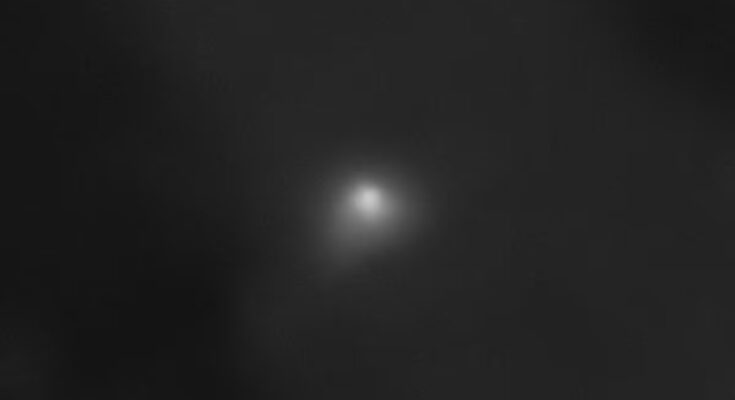NASA has broken its silence on comet 3I/ATLAS, after more than a month and a half without releasing information or images. This Wednesday, the US space agency shared its latest images of the interstellar object, collected from eight of its science missions at different points in the solar system. From its observatories on Earth to its probes on Mars, including the space telescope HubbleThe photographs and signals captured and now revealed by NASA help the scientific community get a much better idea of what this unusual and mysterious astronomical object really looks like.
Amit Kshatriya, associate of the space agency, spoke at the beginning of the press conference – held at NASA’s Goddard Space Flight Center in Maryland (USA) – to allude to the rumors about the alleged alien origin of the comet: “All the data and images show that it looks like a comet, it behaves like a comet and it moves like a comet. Therefore, it is a comet: there is no indication that it is anything different”, said Statler, who clarified that if they had not decided to silence those voices, it was due to the recent closure of administrations that, like NASA, depend on the US federal government.
The comet was detected for the first time on July 1 by the Asteroid Terrestrial Impact Latest Alert System (ATLAS), a planetary defense network made up of five telescopes spread across different points of the Earth, one of which is located in Spain, specifically on Mount Teide. Its name comes from that warning system and the fact that it is the third (3) interstellar object (I) detected by humanity within our space neighborhood, coming from somewhere else in our galaxy, the Milky Way. The 3I/ATLAS observations immediately ruled out that it represents a threat to the Earth: its closest approach will be over 273 million kilometers away on December 19, which is almost double the distance between our planet and the Sun.
Although this interstellar comet crossing the solar system is in no danger of hitting Earth, its peculiarities have given rise to all kinds of theories about its origin. Last month Avi Loeb, a physicist at the prestigious Harvard University, hypothesized that 3I/ATLAS was not actually a comet, but an alien spacecraft, and that it was approaching the center of our planetary system to, from there, launch probes towards Earth and other planets. The closest approach to the Sun occurred on October 29 – it passed at about 210 million kilometers – and since then nothing has changed in the behavior of this astronomical object.
Loeb has already attributed alien origin to the first detected interstellar comet — 1I/ʻOumuamua, in 2017 — and is a figure with a media impact based more on fueling this type of controversy than on his scientific research on comets and asteroids. The consensus among experts in this field is that their hypotheses are “far-fetched” and the result of mere speculation. However, the idea of the alien origin of 3I/ATLAS found wide echo on social networks, favored by conspiracy theories that sought solidity in the silence maintained by NASA in the last month and a half regarding this astronomical object.
However, NASA’s silence has been general and has to do with the recent US government shutdown, the longest in its history, between October 1 and November 12 this year. In addition to the fact that thousands of public employees did not receive their salaries during that period, another consequence is that the space agency’s social networks remained inactive during that period: not to mention 3I/ATLAS or even the successful launch of two twin probes to Mars, carried out last week by a New Glenn rocket owned by tech tycoon Jeff Bezos.
(Breaking news. There will be an extension soon)



